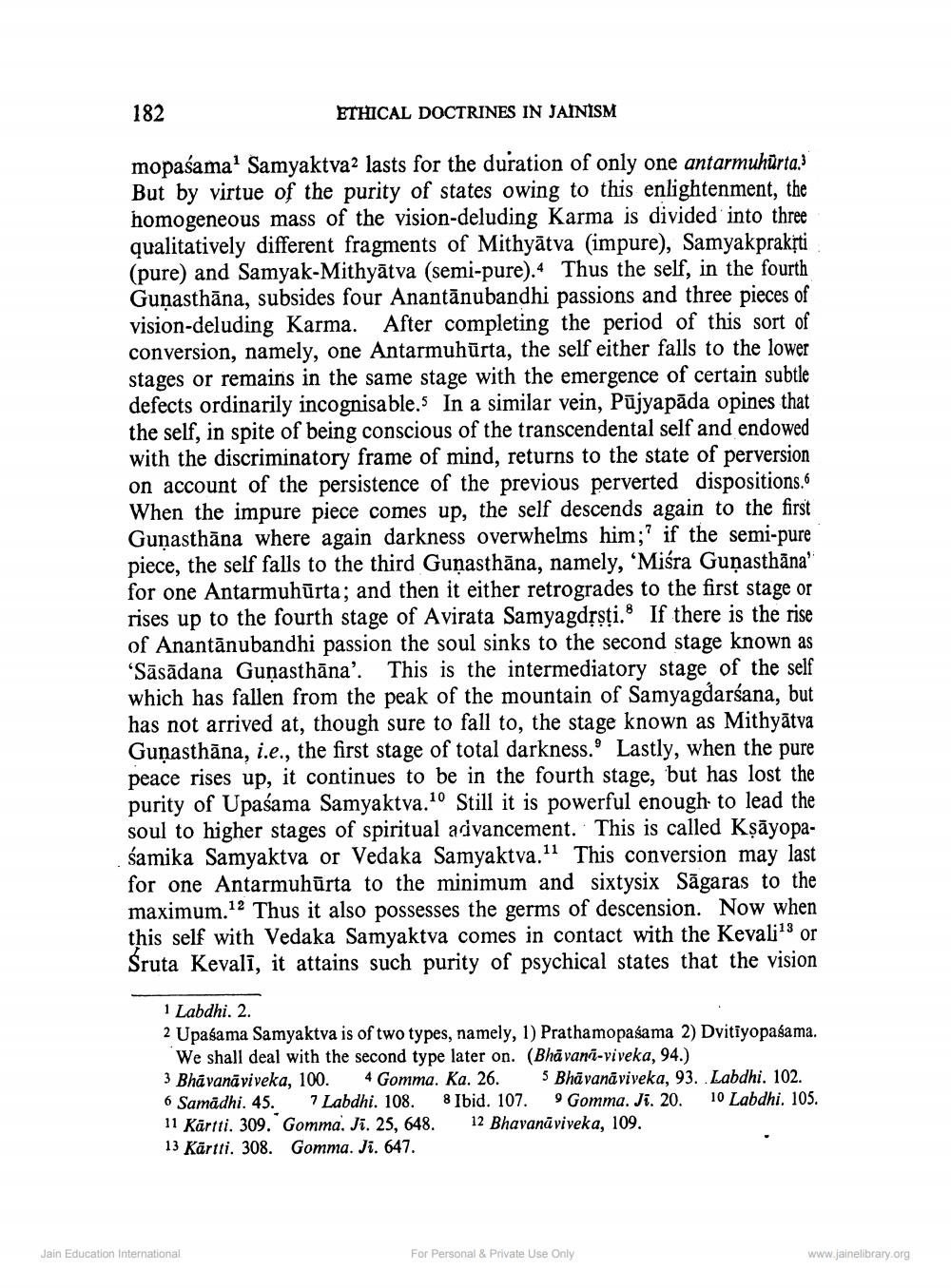________________
182
ETHICAL DOCTRINES IN JAINISM
mopaśama' Samyaktva2 lasts for the duration of only one antarmuhūrta.3" But by virtue of the purity of states owing to this enlightenment, the homogeneous mass of the vision-deluding Karma is divided into three qualitatively different fragments of Mithyātva (impure), Samyakpraksti (pure) and Samyak-Mithyātva (semi-pure). Thus the self, in the fourth Guñasthāna, subsides four Anantānubandhi passions and three pieces of vision-deluding Karma. After completing the period of this sort of conversion, namely, one Antarmuhūrta, the self either falls to the lower stages or remains in the same stage with the emergence of certain subtle defects ordinarily incognisable. In a similar vein, Pūjyapāda opines that the self, in spite of being conscious of the transcendental self and endowed with the discriminatory frame of mind, returns to the state of perversion on account of the persistence of the previous perverted dispositions. When the impure piece comes up, the self descends again to the first Gunasthāna where again darkness overwhelms him;? if the semi-pure piece, the self falls to the third Guņasthāna, namely, ‘Miśra Guṇasthāna' for one Antarmuhūrta; and then it either retrogrades to the first stage or rises up to the fourth stage of Avirata Samyagdssti.S If there is the rise of Anantānubandhi passion the soul sinks to the second stage known as Sāsādana Gunasthāna'. This is the intermediatory stage of the self which has fallen from the peak of the mountain of Samyagdarśana, but has not arrived at, though sure to fall to, the stage known as Mithyātva Guņasthāna, i.e., the first stage of total darkness. Lastly, when the pure peace rises up, it continues to be in the fourth stage, but has lost the purity of Upaśama Samyaktva.10 Still it is powerful enough to lead the soul to higher stages of spiritual advancement. This is called Kṣāyopaśamika Samyaktva or Vedaka Samyaktva. 11 This conversion may last for one Antarmuhūrta to the minimum and sixtysix Sāgaras to the maximum.12 Thus it also possesses the germs of descension. Now when this self with Vedaka Samyaktva comes in contact with the Kevali13 or Sruta Kevalī, it attains such purity of psychical states that the vision
1 Labdhi. 2. 2 Upasama Samyaktva is of two types, namely, 1) Prathamopasama 2) Dvitiyopasama.
We shall deal with the second type later on. (Bhāvanii-viveka, 94.) 3 Bhavanā viveka, 100. 4 Gomma. Ka. 26. 5 Bhāvanāviveka, 93. Labdhi. 102. 6 Samadhi. 45. 7 Labdhi. 108. 8 Ibid. 107. Gomma. Ji. 20. 10 Labdhi. 105. 11 Kärtti. 309. Gomma. Ji. 25, 648. 12 Bhavanāviveka, 109. 13 Kärtti. 308. Gomma. Ji. 647.
Jain Education International
For Personal & Private Use Only
www.jainelibrary.org




